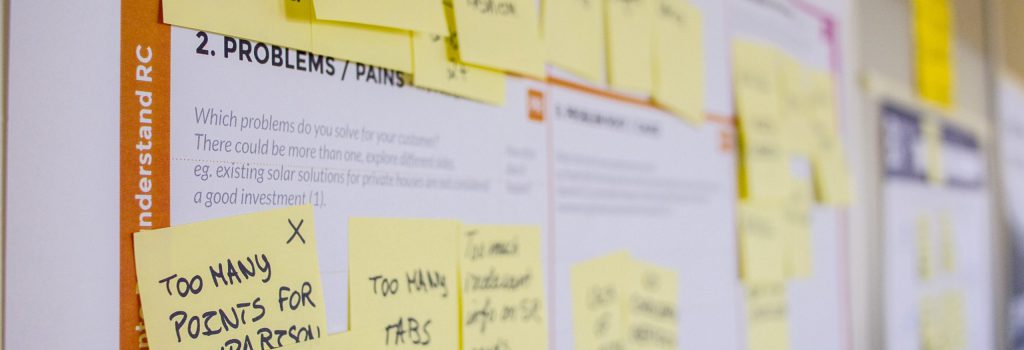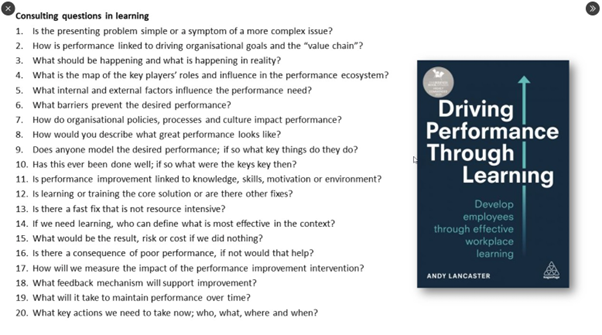
In this series we’re taking you on a 12 week journey to help you deliver virtual training excellence. Last week we touched on the essential role of scoping and design, so this week we’re going to look in more detail at best practice scoping. (More on design to follow in future weeks.)
We’ll look at why scoping is so important, what the barriers are, and top tips to help you scope for success!
Why is scoping so important?
We’ve seen that since COVID L&D departments are more aware of what they want from their virtual learning programmes, but they don’t necessarily understand what’s involved in delivering this. Robust scoping allows training specialists to have a constructive conversation with the client around their expectations versus the timeframe/budget/constraints – meaning key parameters can be reconsidered up front if necessary.
A solid scope:
- Lays out the background behind the training need, providing relevant context to help design and position the course
- Defines the purpose of the training and what success looks like – setting measurable learning outcomes to keep learning design focused
- Identifies the target audience, so training can be tailored to the specific level/roles of learners for maximum relevance and impact
- Identifies the delivery format – such as face-to-face, virtual, self-directed e-learning, etc. – so the course can be optimally designed for the agreed format/s
- Creates clarity on the remit for the training (e.g. skills to be developed, number of learners to be trained, geographical access), preventing scope creep and keeping design and delivery focused
- Determines the core content. I’ve often heard stories of clients with crazily long lists of topics to be covered in a 3 hour virtual classroom! Training specialists can use the scoping stage to flag this, and have early and proactive conversations around priorities.
- Keeps all stakeholders on the same page from the offset about the fundamental aspects of the programme, minimising confusion, frustration and loss of trust throughout the process
Ultimately a robust scope provides a solid foundation for the entire learning experience, ensuring training is relevant, effective, and achieves the learning objectives.

What are the barriers to effective scoping?
1. TIME: Clients (and training providers!) often rush the scoping and design stages to implement fast.
2. BUDGET: When funds are tight, delivery is often prioritised because it’s more tangible than scoping.
However, undervaluing this critical stage merely creates problems at the design and delivery stages, paving the way for confusion and disagreement about the objectives and approach. Time spent on scoping boosts returns in the long run, and creates the foundation for seamless development and impactful outcomes.
As a training specialist, your clients expect you to deliver learning excellence, so you must stress the importance of scoping, and carve out the time to facilitate the creation of a defined business problem, desired outcomes, and SMART (specific, Measurable, Actionable, Realistic and Timebound) learning objectives.
Read on for some advice on how to do this.

The Art of Scoping – Top Tips
- Trainers and subject matter experts have told us it can be challenging to get clients to formalise SMART learning objectives. Here are some scoping questions (thank you @Andy Lancaster] you can use with your clients to help:

- It’s also really important to ascertain your clients’ values and learning culture – for example do they use a particular learning model, such as 70-20-10 (the well known model that recommends learning is 70% on the job, 20% peer interaction, and 10% formal training). This will be a critical input to guide your design. (More on this next week.)
- Typically only 10-20% of what is learned in training is ever actually applied in the workplace. To achieve your clients learning outcomes you need to scope for learning transfer, not just learning! In her great book ‘What Makes Training Really Work: 12 Levers of Transfer Effectiveness’ (highly recommended as a source of best practice in how to really change behaviours through training), Dr Ina Weinbauer explains that there are actually three success factors for learning transfer: training design, the trainees themselves, and the organisation. For each of these, Weinbauer outlines levers that can be activated for maximum transfer. The scoping stage is an opportunity for progressive trainers to instigate meaningful conversations with clients and influence all three of these success areas. For example, by establishing clear benefits for the training which can be used to both motivate and engage the learners as well as meet the organisations objectives, by building in self-assessment and post-assessment evaluations to measure impact, or by planning for the creation of job aides that help people apply the learning when they get back to the workplace.
- Factor the following virtual learning best practices into your scoping conversations with clients around the timings required for delivery:
- Virtual sessions need to be between 90 min to 3H (sometimes a little more) – this will probably mean you need more sessions
- Allow time for participants to be told, shown and given opportunities to use some of the virtual interactive tools they may not be familiar with e.g. how to write on a virtual sticky, how to share their desktop, how to contribute, how to interact in a small group activity
- Connecting with the group is different and it takes a little longer to establish trust – so map this into timings
- Plan for one to two meaningful learning objectives per hour – any more is unrealistic
- Create everything you discuss in a single scoping document and signed off by all the client decision-makers BEFORE you begin the design process! This may be your clients’ document or your own, but if using your clients, DO ask that the agreements you’ve come to on the additional scoping conversations are included somewhere within it.

Once everyone is happy with the scope – you can move on to that all-important design stage!
So join us again next week when we’ll be looking at some frameworks you can use to set your design process up for success.
To make sure you don’t miss out follow us on LinkedIn, and sign up below to get our fortnightly round up straight to your inbox, and receive exclusive resources on Virtual Training Mastery: Designing for Impact.
Further posts
-
Contact SyncSkills
- +44(0) 1737 779480
- hello@syncskills.net
We do not spam and you can unsubscribe at your convenience.


